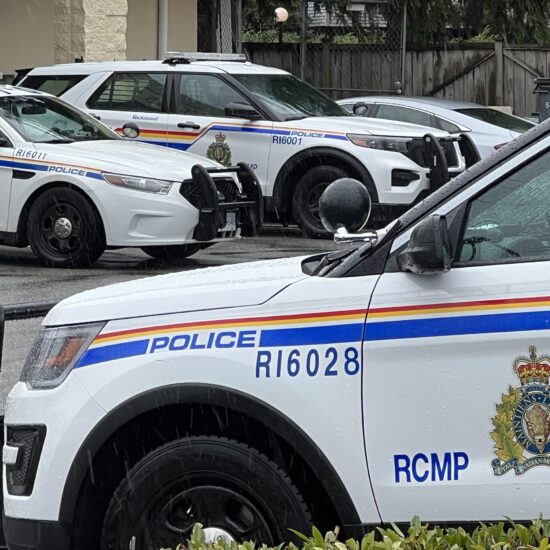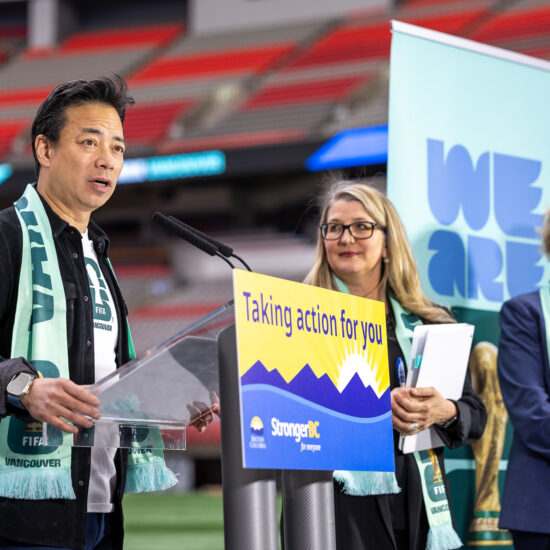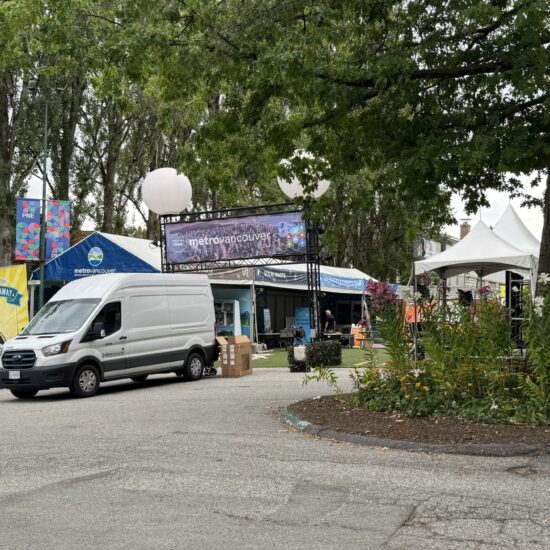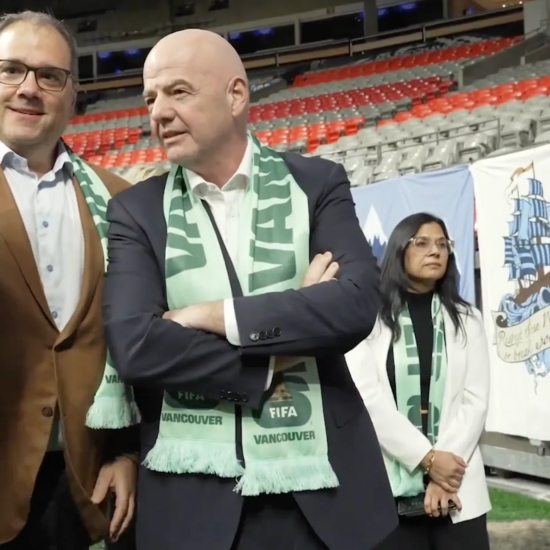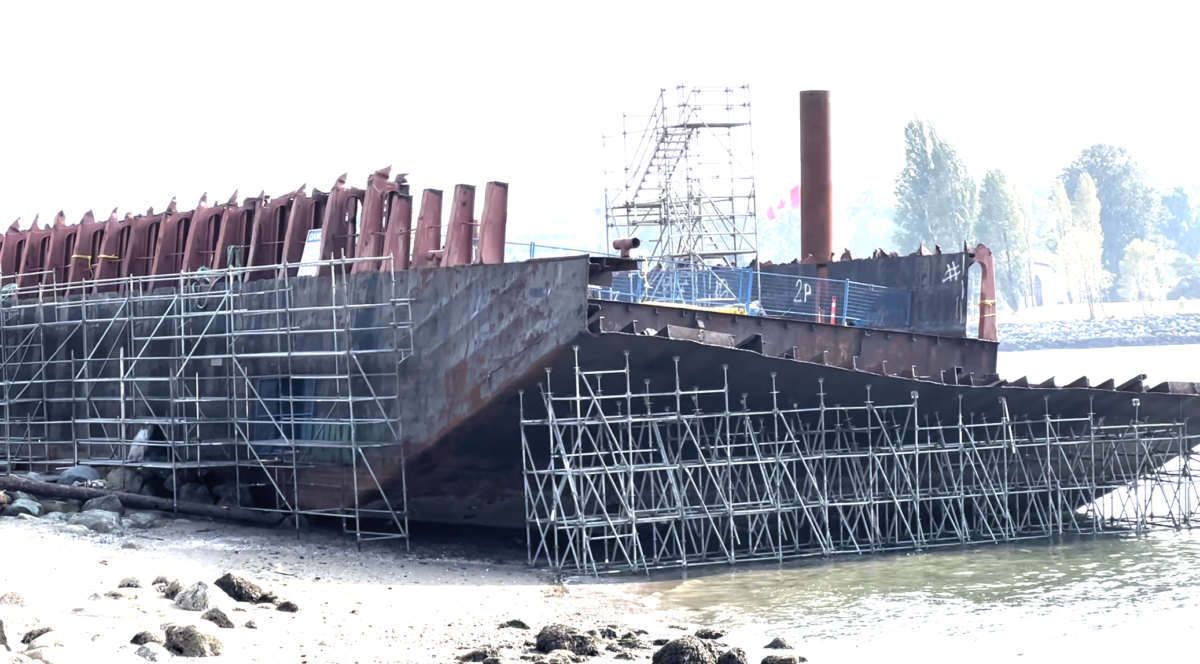
Bob Mackin
At the start of June, a manager with the company hired to dismantle and remove the stranded barge from Sunset Beach estimated the cost of the job at $2.4 million.
Jesse Percy, the design-build director for Carlson Construction Group, sent City of Vancouver business planning manager Harry Khella the cost estimate by email, which was obtained under freedom of information. Percy said Carlson subsidiary Vancouver Pile Driving would need two weeks to mobilize resources before beginning the job, estimated to last between 12 and 15 weeks.
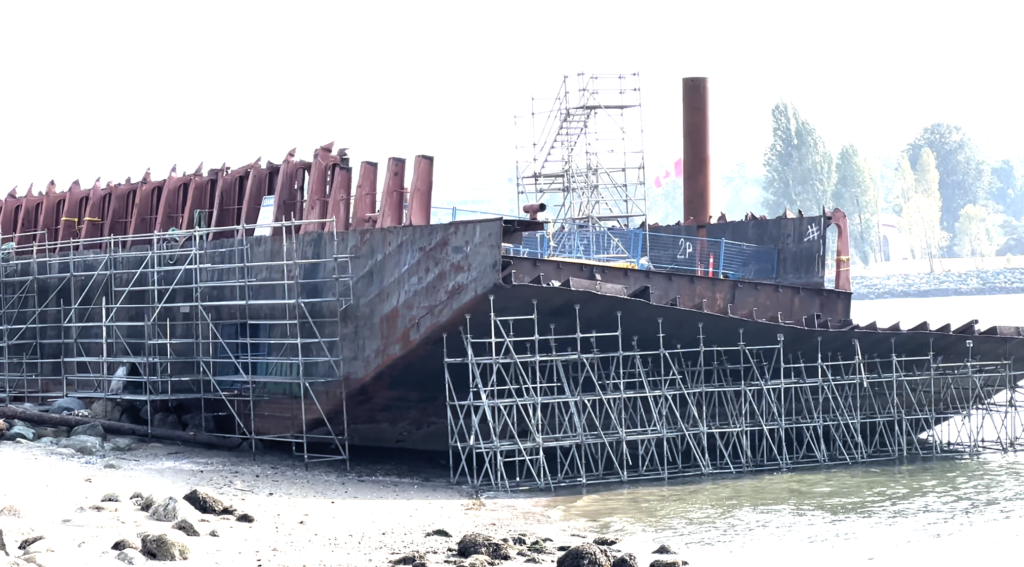
Barge deconstruction on Sept. 7 (Mackin)
The bin barge ran aground in a Nov. 15, 2021 windstorm. The project entered its 11th week on Monday. Crews have removed the front and rear sections from the formerly 84-metre long vessel, known officially as STM-5000.
Jenn Wint, spokesperson for the barge removal operation, said the cost estimate remains accurate and crews are on target to complete the job in mid-November, assuming weather and tides don’t interrupt their work.
She did not say when the beach would reopen to the public. Documents show that a post-deconstruction habitat survey is planned for May 2023.
“Upon completion an extensive clean up of the beach and surrounding area will be done,” Wint said.
A statement provided via Krystyna Domes of the city hall communications department said additional work is required after the barge is gone, including post-deconstruction inspections.
“However, timelines for the next steps are not yet determined. We will have more to share at a later date,” said the statement from Domes.
Wint said Coast Claims Insurance is compensating the barge removal on behalf of barge owner Sentry Marine Towing Ltd. “The City of Vancouver is tracking all of their related costs and will be pursuing reimbursement from the barge owner.”
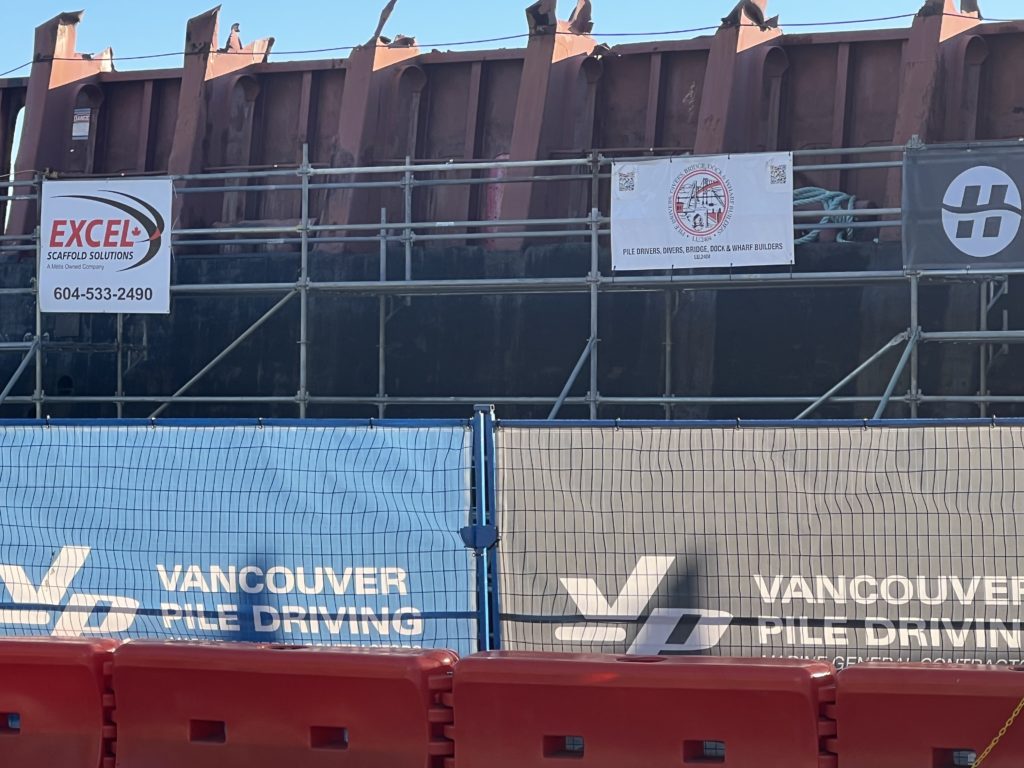
Barge deconstruction on July 13 (Mackin)
A late-April version of the contractor’s schedule estimated deconstruction and removal would be over by mid-July. Approval to use provincially owned land, negotiations for a licensing agreement between the city, Sentry and Coast Claims and discussions about the weight and type of site barriers all caused delays.
The safety barriers were erected June 30 and deconstruction finally began July 25.
A May 2 email from Katie Semproni, a licensing authorizations manager at the Ministry of Forests, to Percy and Ian Purvis of Carlson addressed the status of provincially owned lots.
“Having reviewed the information provided, we confirm that no additional authorizations are required under the Land Act to carry out the work as described,” Semproni wrote. “In addition, we do not object to this work occurring provided that Vancouver Pile Driving continues to engage with the [City of Vancouver] on this and that the appropriate insurance and authorizations from other agencies (for example – Transport Canada, DFO if applicable) are in place prior to commencement.”
The May 27 Vancouver Pile Driving weekly status report warned that the 48 truck trips contemplated would likely cause further damage to the upper path, which already showed signs of sub-grade failure. City hall also acknowledged it needed Metro Vancouver approval due to a force main, or pressurized sewer pipe, within the seawall.
In a May 19 email, Guy Roberts of Metro Vancouver sewer and drainage technical services proposed an alternative to hauling concrete barriers from the far side of the Jervis Pump Station to the edge of the seawall.
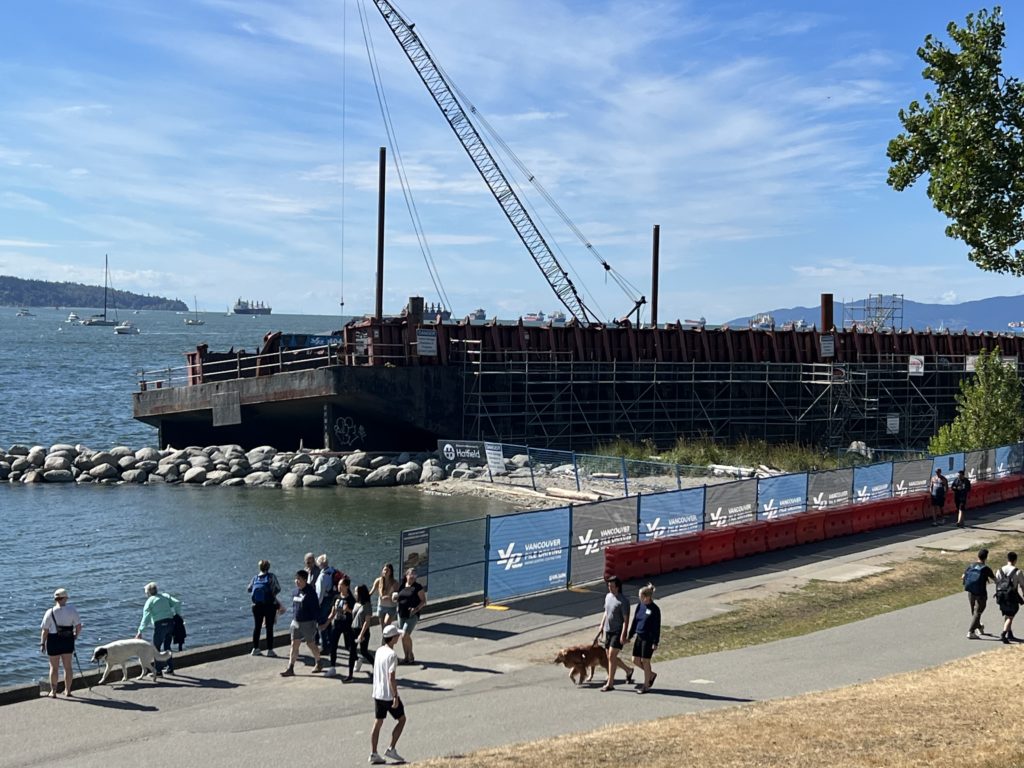
Barge deconstruction on July 13 (Mackin)
“Empty barriers would be much lighter and would avoid many of the loading issues that we are dealing with,” said Roberts. “And presumably the water can be piped in from possibly a hydrant so a water truck would not be needed. “
A hazardous materials survey by Orca Health and Safety found breaches of the hull in at least three places. Testing found lead throughout the hull and bulwarks and diesel oil and hydraulic fluids. Copper and zinc were presumed in the hull underwater. No asbestos, volatile organic compounds or PCBs were found, but materials that were detected needed to be removed or contained prior to demolition.
“The presence of lead in the vessel’s paint systems is considered to pose a moderate to high risk to workers during breaking,” said the Orca report.
Support theBreaker.news for as low as $2 a month on Patreon. Find out how. Click here.






